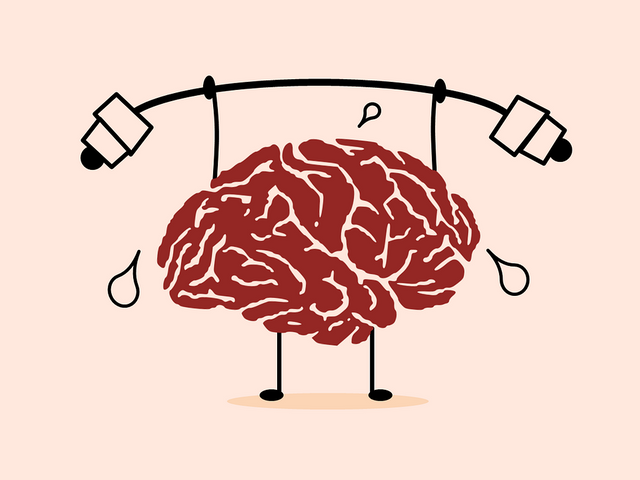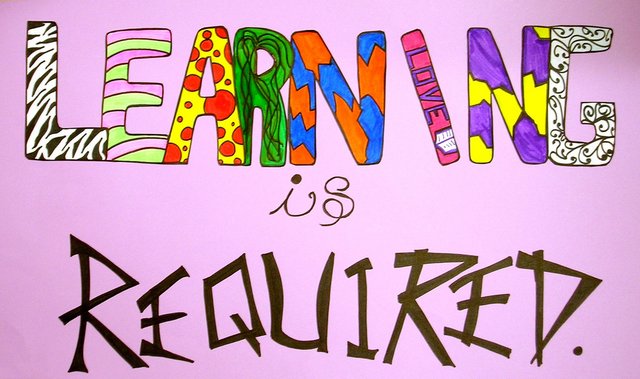Improve learning: Feynman technique
Improve learning: Feynman technique.
Maybe at some point, you have felt a little frustrated with yourself and have also thought that you are not moving forward while you are studying. You may also have wondered why your learning pace is so slow or even, you have despaired after several failed attempts to memorize the meaning of a concept. Withholding information in our mind is sometimes not so simple.
That is why in this post I would like to talk about one of the techniques that can give you the best results when you start your journey through the world of learning. The Feynman technique, a simple and efficient strategy to acquire new knowledge in a faster and deeper way.

pixabay
Public Domain
The method that Feynman used to learn something new was something that this famous scientist used recurrently for the simple and infallible that was for him. One of its main motivations when doing science, so to speak, was to show that the most complex phenomena of nature could be attractive to the immense majority and not only to experts.
Many times we tend to believe that the more difficult and profound we are able to explain an idea, the more we have understood this idea. However, for Einstein, it was not like that
If you can not explain something in a simple way is that you yourself have not understood enough - Albert Einstein.
Who was Richard Feynman?
Richard Feynman was a North American physicist who won the Nobel Prize in Physics for his important contribution in the development of quantum electrodynamics, as well as being the most outstanding driver of the Feynman method.
In addition to being among the most famous scientists in the world, Feynman had a particularity and is that he was known by many people as "The great explainer", all this because one of the greatest passions of the American physicist was to impart knowledge.
He loved to explain, his classes were famous for the incredible passion and dedication he showed when narrating and explaining scientific phenomena. Feynman was famous for how he managed to synthesize and summarize such complex topics in such a light way.
I do not know what happens to people: they do not learn by understanding; they learn in some other way, by routine, or in some other way. How fragile is your knowledge - Richard Feynman.
Feynman method.
The Feynman technique was unveiled by James Gleick in the book Genius: The Life Science of Richard Feynman.
The Feynman method is basically about studying in an intuitive way, making our brain wrap the concept to make it part of it. This method takes advantage of the cognitive tools in which the human being has historically proven to be very good.
What I can not create, I do not understand - Richard Feynman.
This technique basically consists of continuously reading the material you want to learn or memorize so that later, try to explain it in a more summary and simple way as if we wanted to make it understood to a child or a person with no knowledge of the subject.
The basic principle of this learning technique consists of an active methodology, since it urges the person who wants to learn or memorize a concept to create his own version of the study material so that when he wants to explain it; he has mastered the concept in such a way that he is able to use his own definitions.
The best way to understand something is to explain it - Richard Feynman.
The 4 steps of the Feynman technique.
The Feynman learning technique consists of 4 easy steps.
First step.
To begin with, the first thing we have to do is take a piece of paper and write on the upper part as a title, the name of the concept we want to learn.
For example, if we are studying about the states of matter; we must place that title at the top of the page.
Second step.
After we have written the name of the concept we want to learn in the upper part, the following is to conceptualize it with our own ideas of the subject, in the simplest way possible using a simple language, as if we were explaining it to another person or even to a child.
Third step.
The third step is basically about correcting the concept in order to find ideas that are not very clear or that are somewhat confusing.
In this case what was recommended by Feynman was to take information from other more precise sources and make the necessary adjustments.
Learn to solve all the problems that have already been solved - Richard Feynman.
Fourth step.
The final step is about reviewing once again the document we have written so that we can make a final correction if there is any inconsistency or if we have used terms and ideas that are too complicated. Remember that even if the goal is for the concept to be simple, it must also be explained correctly. In this step, it is advisable to use some metaphors or even analogies that make the concepts more digestible. Whatever format we reach, the important thing is to make sure that the speech can be understood by anyone.
If after following these four steps, our explanation is still not understood or remains somewhat confusing, we may not have fully understood what we have studied. In this case, it would be best to start over.
Youtube - Author: Sprouts
Tips to improve the process.
The main foundation of this technique is to be able to expose a concept in such a way that any person can understand it. So these are some of the tips that can help us improve the learning process.
- Imagine simple analogies about the subject, so that you can get to represent the subject with basic, everyday examples.
- If it is a very complicated or deep issue, it is best to section it and study it in parts so that your brain does not assume such heavy burdens.
- Try to answer yourself the questions that arise, so you can go deeper into the subject and you will understand it better.
- Represent the concepts with your own style, because if you only try to memorize and not understand sooner or later you will forget what you had memorized.
- The final test should always be to explain fluently and in a simple way the subject or concept, if you can get someone else to understand it then that means that you have understood correctly.
References
- The Feynman Technique: The Best Way to Learn Anything - Farnam Street
- How to Use the Feynman Technique to Learn Faster (With Examples) - College info geek
- How I Used the Feynman Technique to Study and Got Better Grades - Study.com
- Richard Feynman - Wikipedia
- Feynman Technique - Scott H Young - PDF
- The Feynman Technique: How To Learn Anything New In Four Easy Steps - ScienceABC
- The Feynman Technique - Youtube
If you want to read more scientific articles of good quality, do not waste your time, and visit the hashtag #steemstem.
Disclaimer: All the images used are correctly labeled for reuse.

)

Hi @ideas-abstractas
We have selected your post as post of the day for our DaVinci Times. Our goal is to help the scientific community of Steemit, and even if our vote is still small we hope to grow in quickly! You will soon receive our sincere upvote! If you are interested in science follow us sto learn more about our project.
Immagine CC0 Creative Commons, si ringrazia @mrazura per il logo ITASTEM.
CLICK HERE AND VOTE FOR DAVINCI.WITNESS
Keep in mind that for organizational reasons it’s necessary to use the “steemstem” and “davinci-times” tags to be voted again.
Greetings from @davinci.witness and the itaSTEM team.
Your Post Has Been Featured on @Resteemable!
Feature any Steemit post using resteemit.com!
How It Works:
1. Take Any Steemit URL
2. Erase
https://3. Type
reGet Featured Instantly & Featured Posts are voted every 2.4hrs
Join the Curation Team Here | Vote Resteemable for Witness
Fantastic article, I think i've been unintentionally doing alot of this in my profession as a private music teacher, It's amazing how much you discover about your own learning process when you have to teach other people. Though this post relates more to understanding/applying concepts, something that applies more to a practice based acquistion of skill that I find helpful is meticulous journaling about the objective markers of progress. Its amazing how many times I'll have a student come in lamenting that they are "never getting any better" at which point I'll take them back to an old piece and show them just how far they've come. At some point learning becomes so subliminal that it is much harder to focus on what we've already internalized rather than what we are struggling to grasp currently. K. Anders Ericsson has a great book about the new science of learning called "Peak" that you should check out!
Congratulations! This post has been upvoted from the communal account, @minnowsupport, by Ideas-abstractas from the Minnow Support Project. It's a witness project run by aggroed, ausbitbank, teamsteem, theprophet0, someguy123, neoxian, followbtcnews, and netuoso. The goal is to help Steemit grow by supporting Minnows. Please find us at the Peace, Abundance, and Liberty Network (PALnet) Discord Channel. It's a completely public and open space to all members of the Steemit community who voluntarily choose to be there.
If you would like to delegate to the Minnow Support Project you can do so by clicking on the following links: 50SP, 100SP, 250SP, 500SP, 1000SP, 5000SP.
Be sure to leave at least 50SP undelegated on your account.